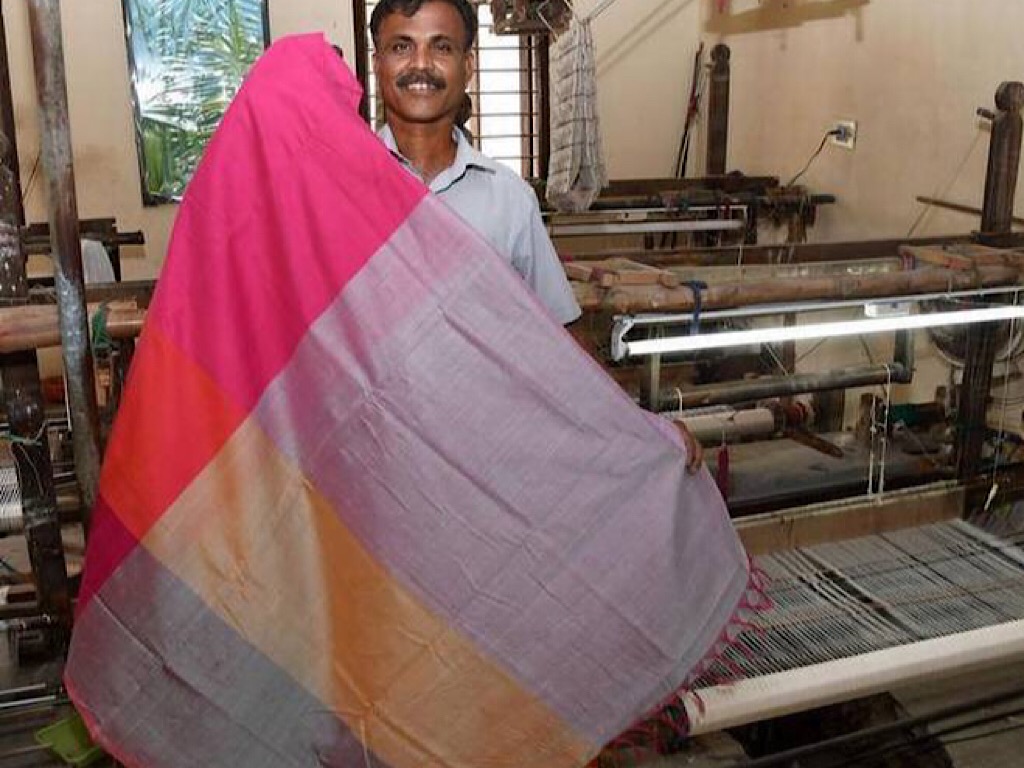2 Mins Read
An idea that a weaver came up with two decades ago, saris made sustainably from banana fibre have revived a tradition in the suburb of Anakaputhur in Chennai, India. This tradition that stretches back 90 years was threatened in the 1960s when Nigeria began banning textile imports, which translated in massive losses for Anakaputhur’s weavers.
In the 1970s, the suburb was filled with as many as 5,000 handlooms. According to C. Sekhar, the President of the Anakaputhur Jute Weavers Association, each household used to have at least 5 looms. This is a starkly different picture from the 100, most of whom are women, who make up Anakaputhur’s weaving population today.
Determined to keep the three-generation long tradition alive, Sekhar thought of a new way to make handlooms popular again. “We create yarn from banana fibres, extracted from banana stems. In the South of India, this is available in abundance. Over the years we have sold hundreds of these saris,” said Sekhar in a conversation with The Better India.
While banana stems are plentiful in the region, the process involved in making sustainable banana fibre saris is labour-intensive and time-consuming. It requires fibres to be manually extracted from dried and scraped banana stems in order to make yarn. Once this is done, it takes two weavers around two days to complete a sari before natural dyes such as turmeric and indigo are used to give its fabric a colourful splash.
And it doesn’t stop there: each product is treated in herbs and spices for their good-for-the-skin anti-bacterial properties. “We also use medicinal herbs like Tulsi and mint to ensure that skin allergies of all kinds are at bay,” said Sekhar.
As special as banana saris sound, Sekhar has also developed other natural and eco-friendly plant fibres such as bamboo and aloe vera. In total, he has come up with 25 different types of fibre and even weaved one sari using all these 25 fibres to make it into the Limca Book of Records in 2011.
Sekhar hopes that more people will get to know the story behind these sustainable saris and support the handloom weavers that have kept the decades-long tradition alive.
Lead image courtesy of The Hindu.




